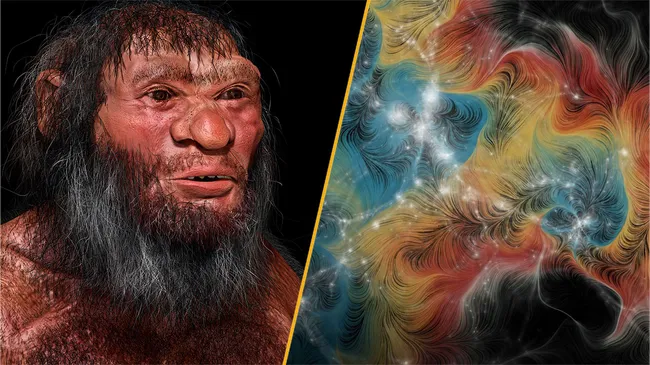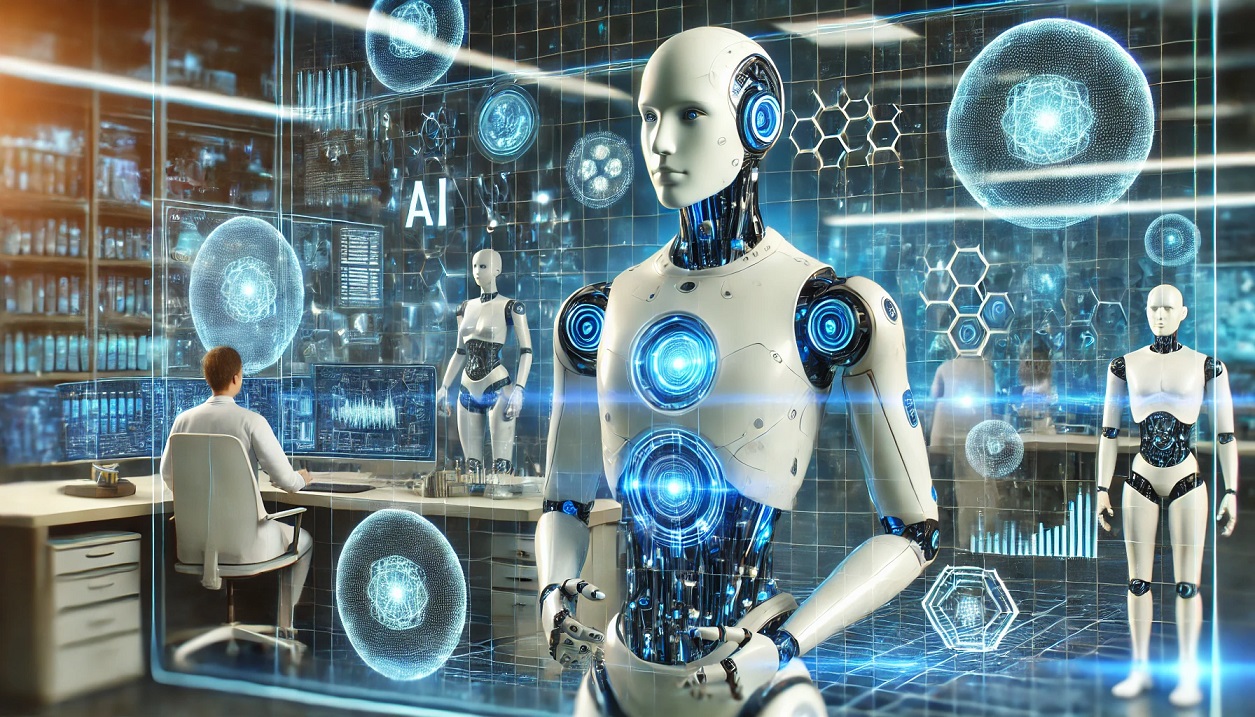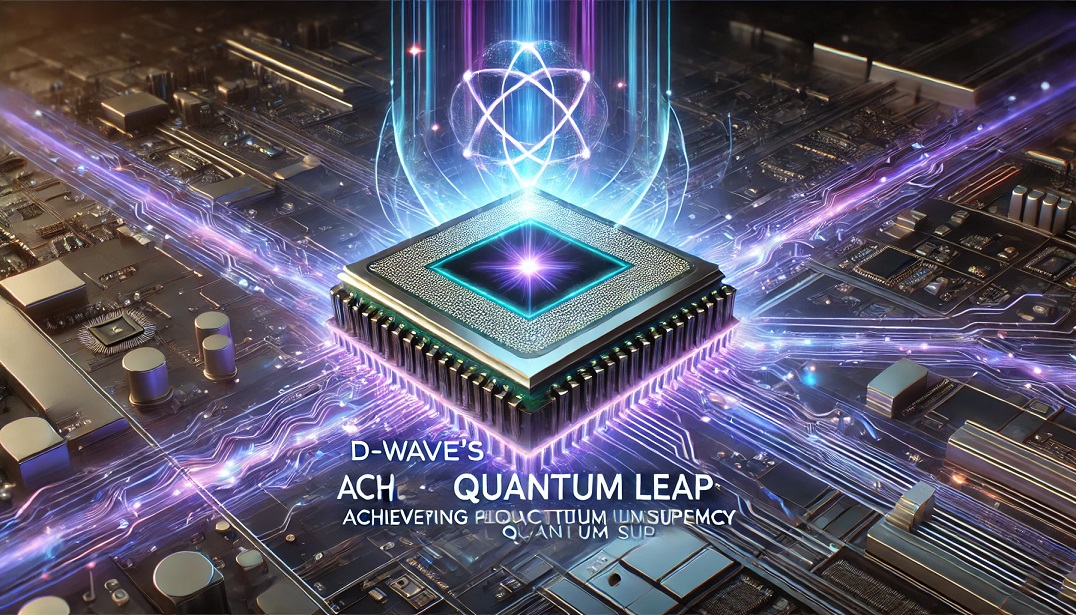The Day Science Redefined the Past and the Cosmos — June 21, 2025
Today is one of those rare days when two entirely different realms of science — human ancestry and astrophysics — collided in brilliance. In one stunning reveal, scientists offered a clearer face to one of our most mysterious human relatives, the Denisovans, while simultaneously solving a cosmic puzzle that has baffled astrophysicists for decades — the mystery of the missing baryonic matter in the universe.
This day is now marked not by just one breakthrough, but two monumental moments that change how we see ourselves and our place in the universe.
👣 Meet “Dragon Man”: A Denisovan Face Emerges from the Shadows
💀 The Discovery That Took Almost a Century
It began quietly in 1933, when a Chinese laborer working on a bridge in Harbin stumbled upon a massive fossilized skull. Instead of reporting it, he wrapped it in cloth and hid it in an abandoned well to protect it from Japanese occupiers during World War II. For nearly 85 years, the fossil remained in the dark — literally — until his descendants finally handed it over to scientists in 2018.
What experts found was nothing short of extraordinary. The skull measured a massive 9 inches long and 6 inches wide — far larger than any modern human cranium. Its features were primitive yet powerfully structured: a flat, broad face, wide eye sockets, strong brow ridges, and a braincase size rivaling that of Homo sapiens.
The nickname? “Dragon Man”, inspired by the Dragon River — Songhua Jiang — near where it was found.
🧬 Homo Longi vs Denisovans: The Debate Is Settled
At first, the scientific community cautiously classified it as a new species of archaic human called Homo longi. But many suspected it might be linked to another shadowy ancestor — the Denisovans — a mysterious human group known only from a few teeth and bone fragments found in a Siberian cave.
Fast forward to 2025: thanks to cutting-edge protein analysis and dental plaque DNA sequencing, scientists have now confirmed that Dragon Man is Denisovan — not just any ancient hominin.
This is the first time we've had a nearly complete Denisovan skull, and it’s changing everything.
🧠 Why Dragon Man Matters to Human Evolution
The Denisovans are believed to have lived across Asia for hundreds of thousands of years. Genetic traces of them can still be found in modern-day humans, particularly among populations in East and Southeast Asia, as well as Indigenous peoples of Australia and the Pacific Islands.
But until now, they’ve been faceless ghosts in the human story — we knew they existed, but had no clear idea what they looked like. Dragon Man gives us that face. With this fossil, we now understand their robust anatomy, large brains, and unique adaptations.
The discovery also raises bigger questions: If Denisovans had such a wide range, how many other fossils previously labeled as Homo erectus or archaic Homo sapiens might actually be Denisovans?
🧭 Timeline of Human Cousins: The Expanded Tree
With Dragon Man now confirmed as Denisovan, the timeline and complexity of human evolution gets even more tangled — and fascinating.
Roughly 800,000 years ago: Homo erectus spreads across Asia
Around 400,000 years ago: Common ancestor of Neanderthals and Denisovans emerges
From 300,000 to 50,000 years ago: Denisovans and Neanderthals interbreed with Homo sapiens
Today: Traces of Denisovan DNA persist in humans — and now, we finally have their face
The human family tree is no longer linear. It’s a braided river of interbreeding species, spreading and reconnecting across time and space.
🔭 Meanwhile, in the Stars: The Missing Matter Is Found
🌌 The Problem That Plagued Physics for 25 Years
Ever since cosmologists calculated the total amount of baryonic matter — the \ordinary\ matter that makes up stars, planets, and you — there’s been a massive gap between what theory predicts and what telescopes detect.
We could see only about half of the matter predicted by Big Bang nucleosynthesis. So where was the rest?
For decades, researchers hypothesized that the \missing\ baryons were hiding in filaments of hot gas stretching between galaxies — too faint to see clearly.
And finally, they were right.
📡 Fast Radio Bursts Reveal the Invisible
Enter fast radio bursts — or FRBs. These are extremely brief, bright pulses of radio waves that originate from faraway galaxies. When these signals travel through space, they slow down slightly depending on the density of the matter they pass through — kind of like how light slows in water.
Scientists measured 69 carefully selected FRBs from across the universe. By calculating the delay in their arrival times, they could estimate the amount of ionized gas — and thus matter — between the galaxies.
The results? They matched predictions almost perfectly. Around 76% of the universe's baryonic matter is located in intergalactic gas. Add the 15% in halos and 9% in galaxies themselves, and we’re now at 100%.
Mystery solved. The missing matter isn’t missing — it was just invisible until now.
🛰️ Satellite X-Ray Telescopes Confirm the Hot Gas Filaments
But there's more. Researchers also used X-ray space telescopes, including ESA’s XMM-Newton and Japan’s Suzaku, to directly image the hot gas filaments weaving through space.
One filament, part of the Shapley Supercluster, was a whopping 23 million light-years long and packed with gas hot enough to glow in X-rays. This was the long-theorized cosmic web, now seen in action.
Together, these methods offer independent and powerful confirmation that the universe’s baryonic matter was hiding in plain sight — thin, superheated strands between galaxies.
🧠 The Science Behind the Headlines
These two discoveries may seem unrelated — one skull, one map of the cosmos — but they both symbolize something greater: the maturity of science. Both breakthroughs relied not on one genius moment but on decades of incremental progress.
Dragon Man’s skull wasn’t even studied until new DNA techniques were developed. The cosmic filaments weren’t visible until we had sensitive X-ray imaging and global networks tracking FRBs.
These are triumphs of collaboration, persistence, and innovation.
🚀 Why It Matters To You
Let’s bring this back to Earth — and to you.
Dragon Man means that you may carry DNA from an ancient human cousin, one we never saw until now. Your genes may be shaped by interactions 50,000 years ago, passed down through time like silent whispers in your blood.
The missing baryons matter because our models of the universe must match what we observe. Without accounting for that matter, we didn’t fully understand how galaxies formed, how gravity behaved at large scales, or how stars clumped into galaxies in the early cosmos.
With both puzzles now clarified, we see a clearer picture of both who we are and what surrounds us.
🔬 Final Thoughts: Two Puzzles, One Planet, One Universe
On this remarkable day, science gave us answers to two of its biggest mysteries. It showed us the face of a lost relative and the map of a hidden universe. That’s not just a win for paleontologists or astrophysicists — it’s a victory for curiosity, for exploration, and for every human who’s ever looked at the stars or pondered their roots.
And as we stand between the ancient Earth and the glowing galaxies above, we’re reminded: the search for truth is never wasted. Sometimes, it just takes 90 years… or a few billion light-years.

















Comments 0